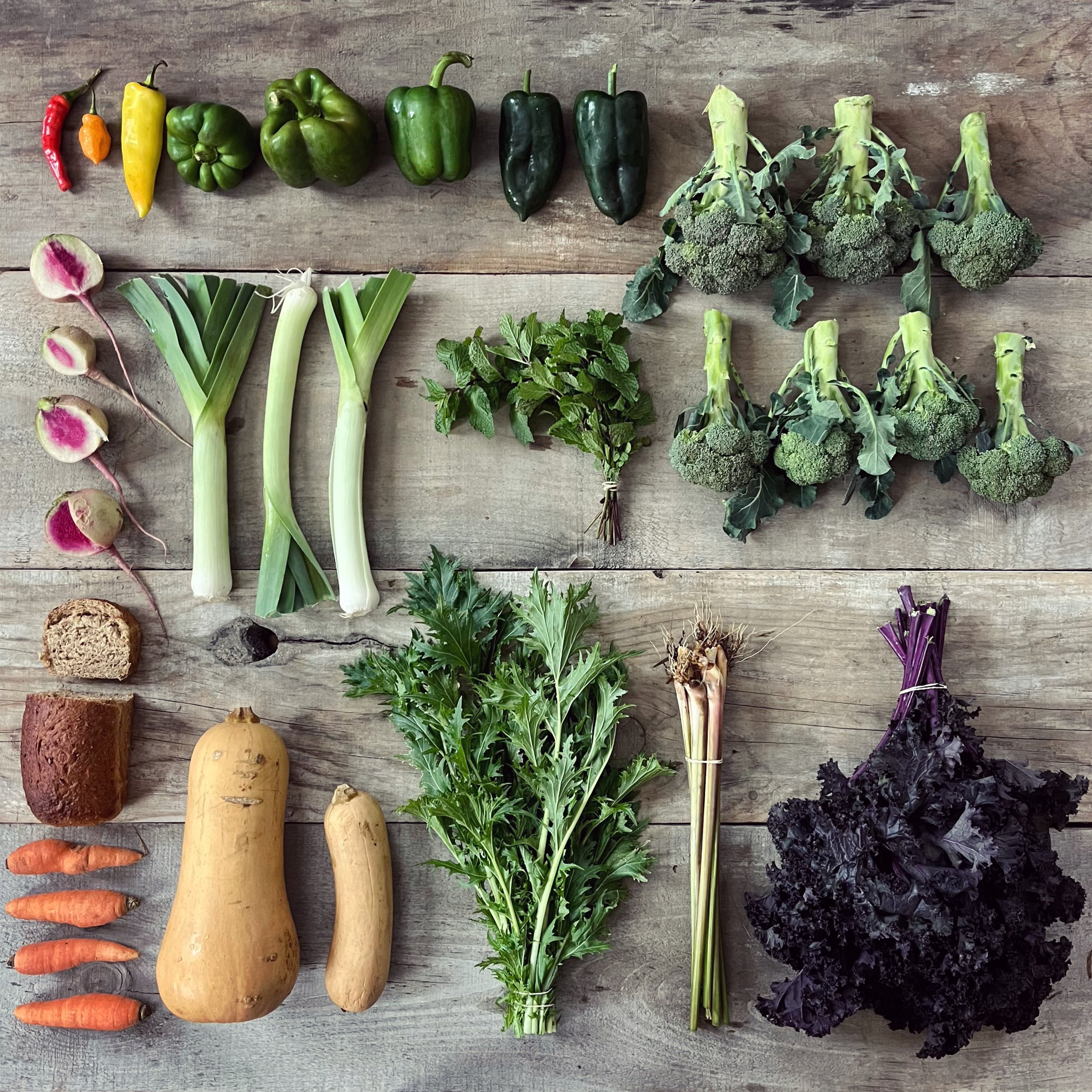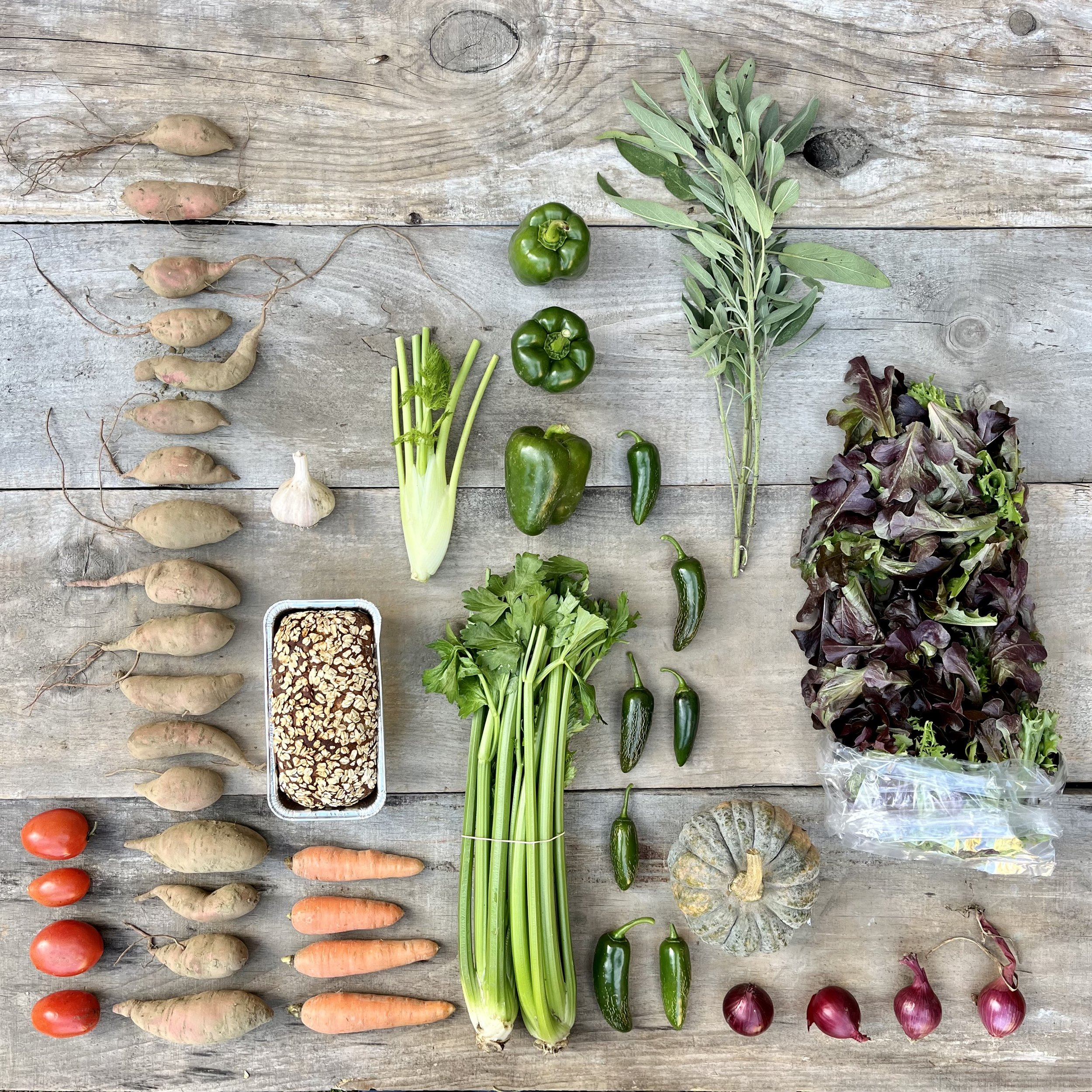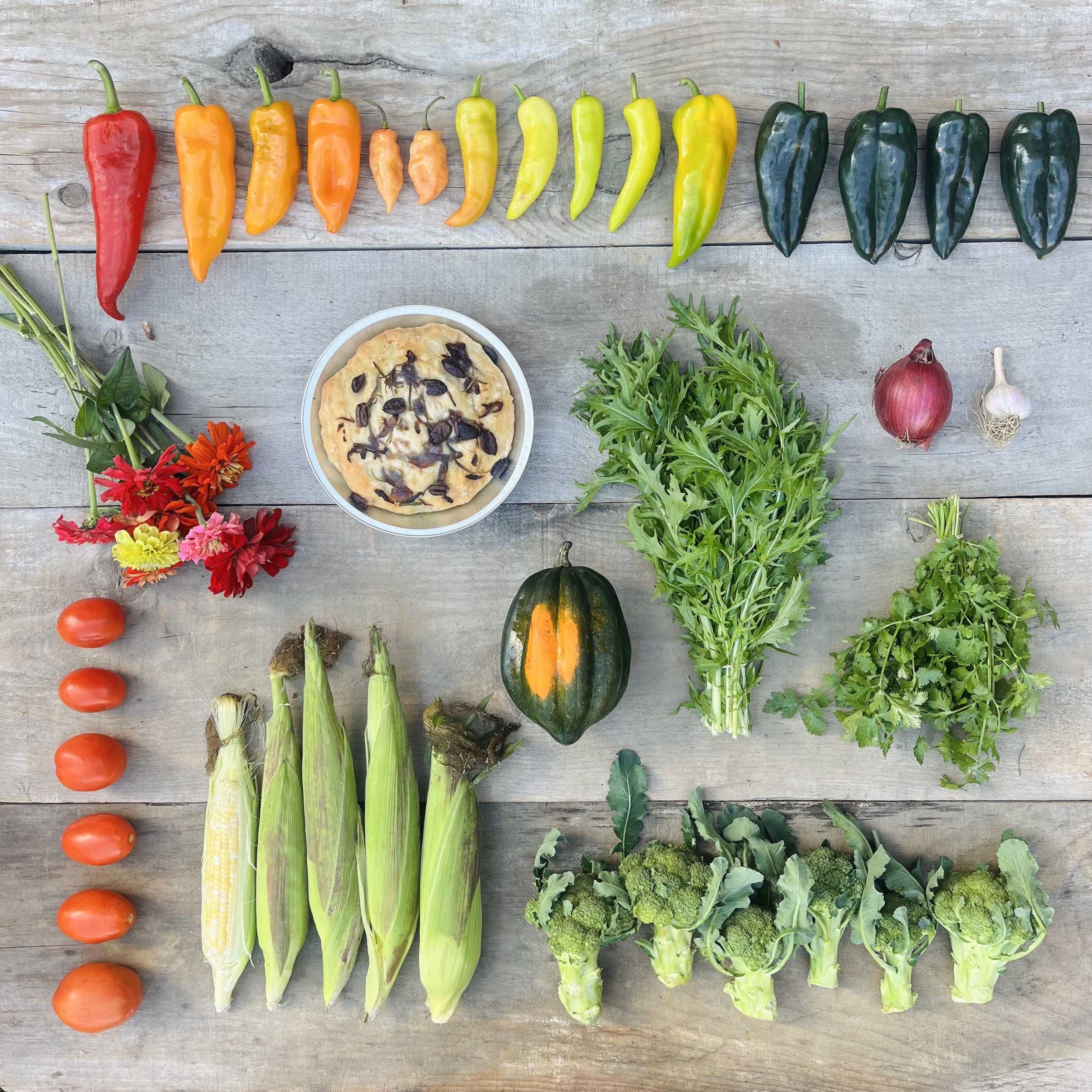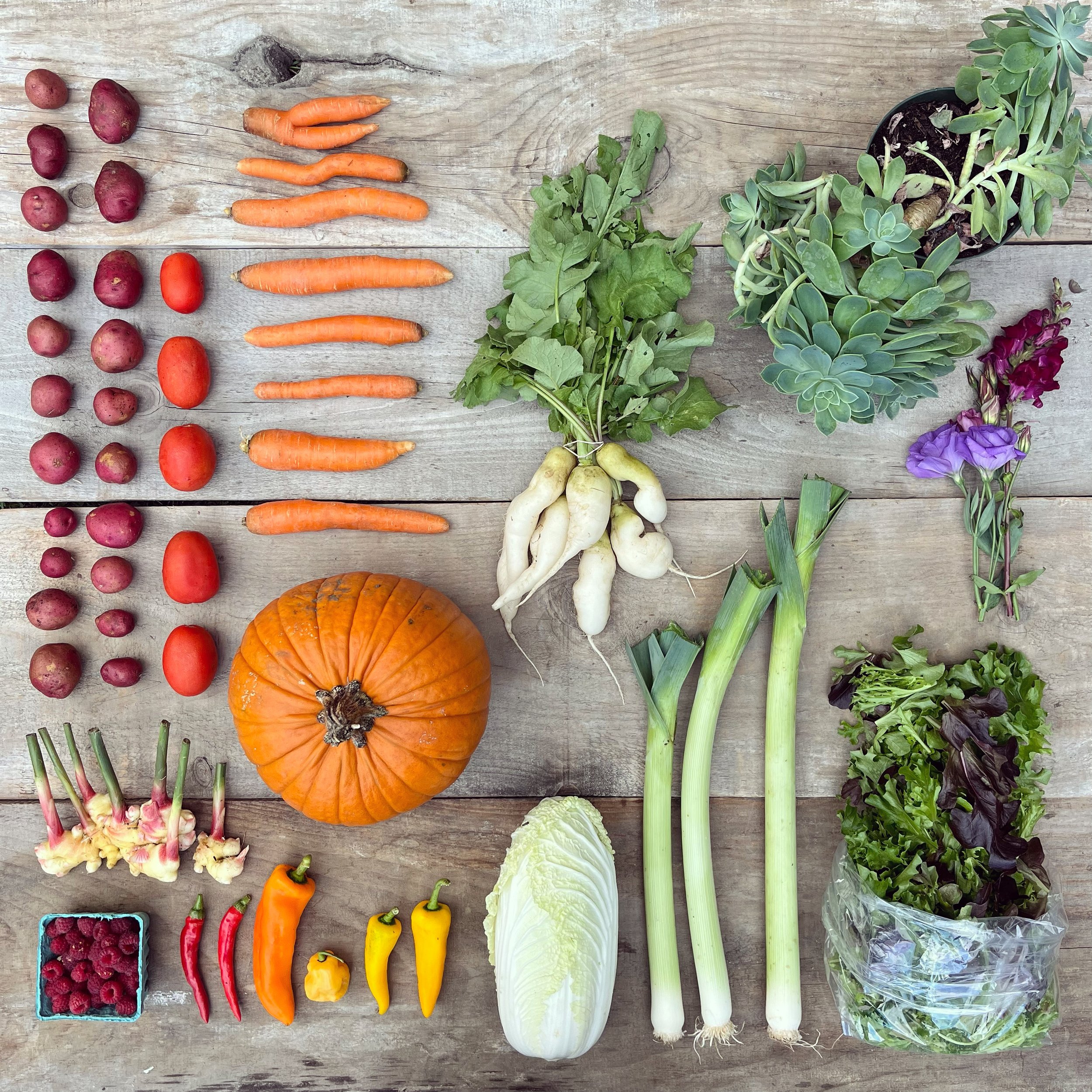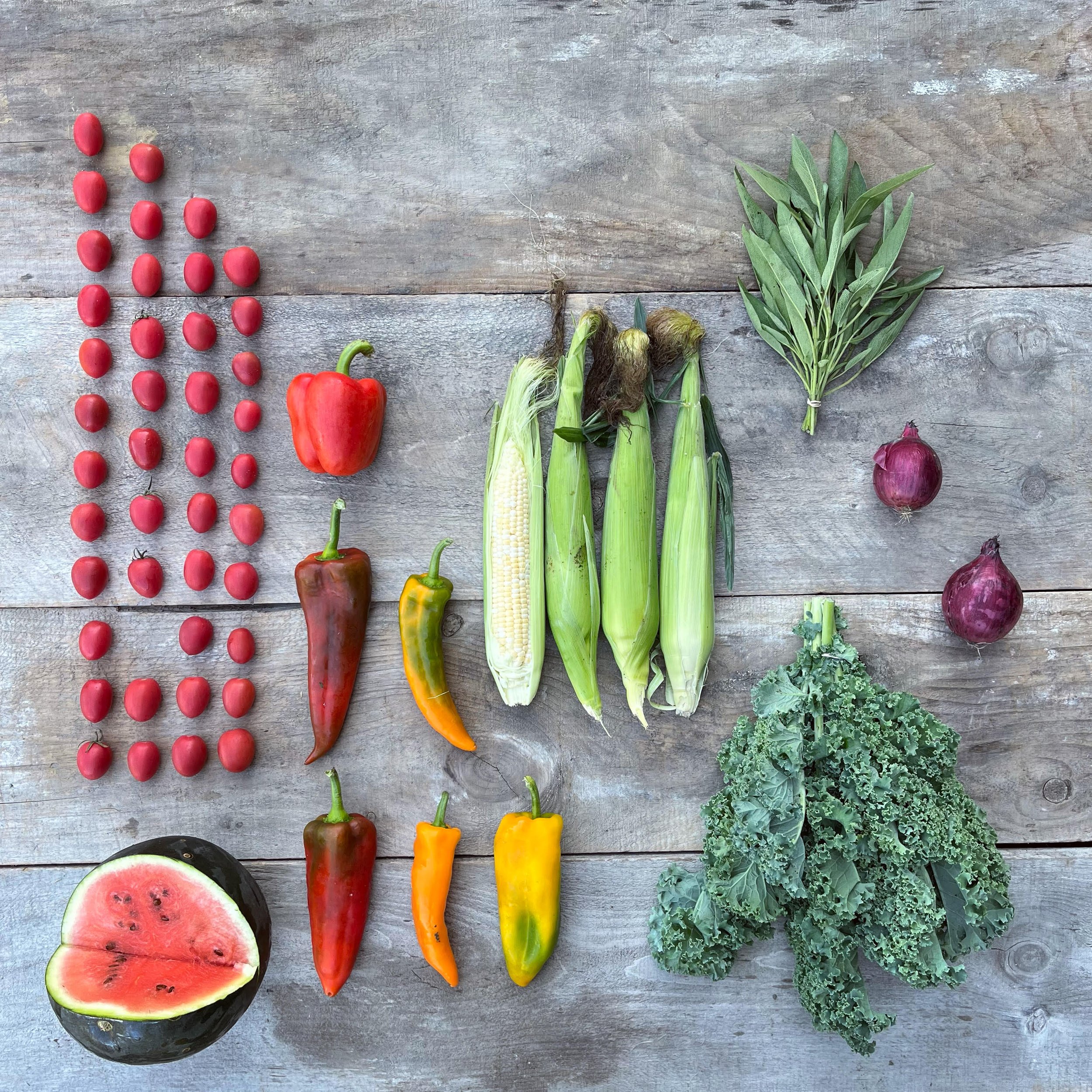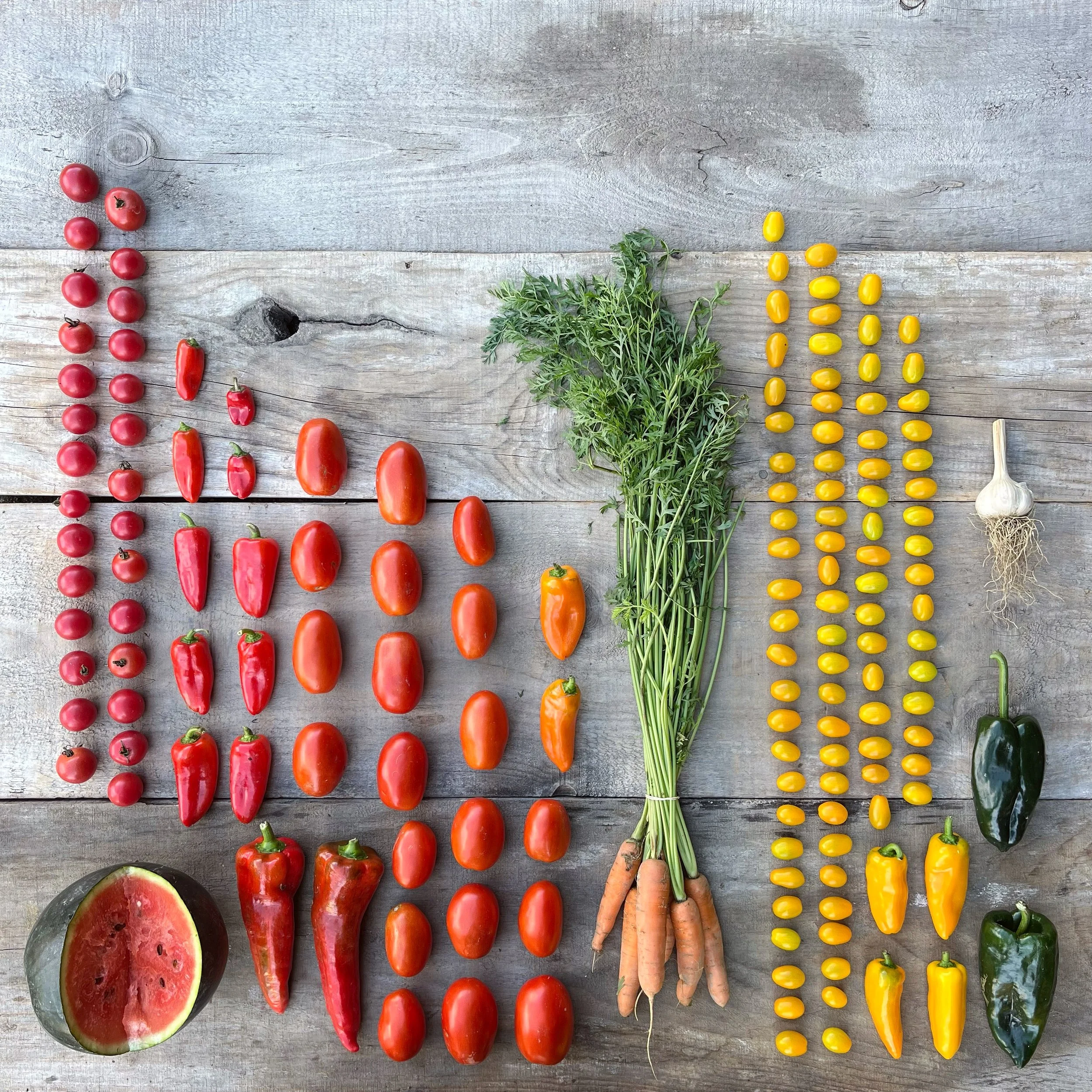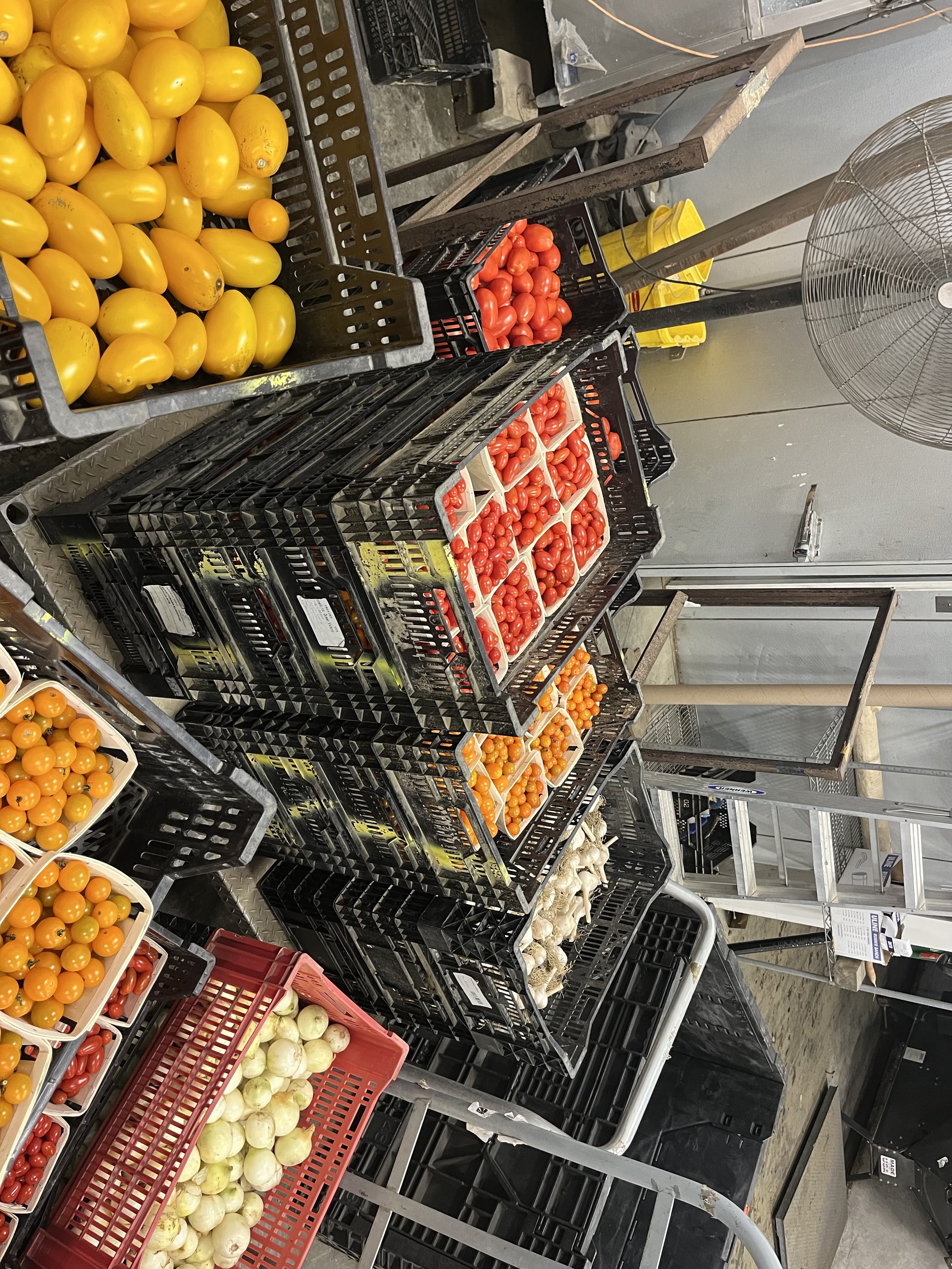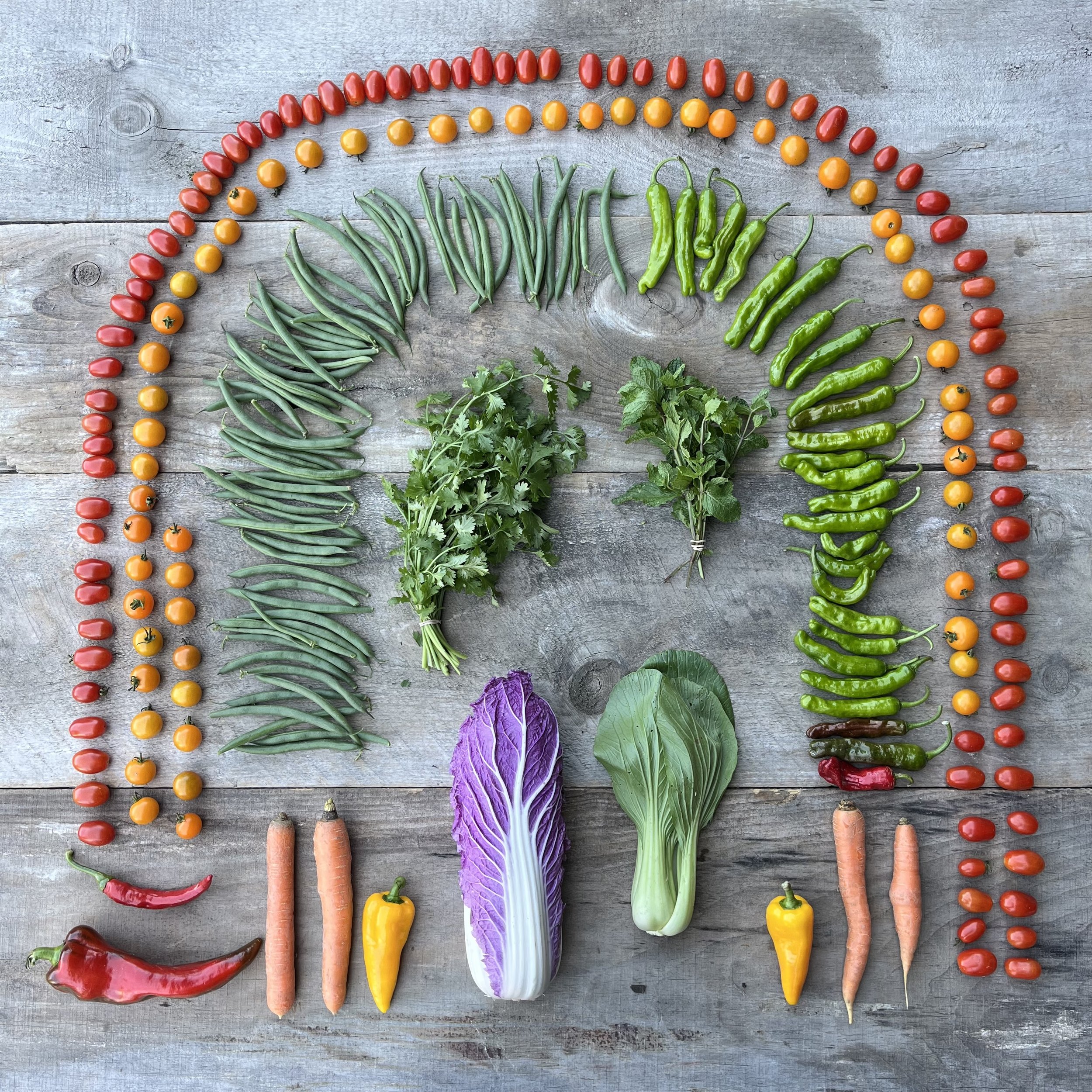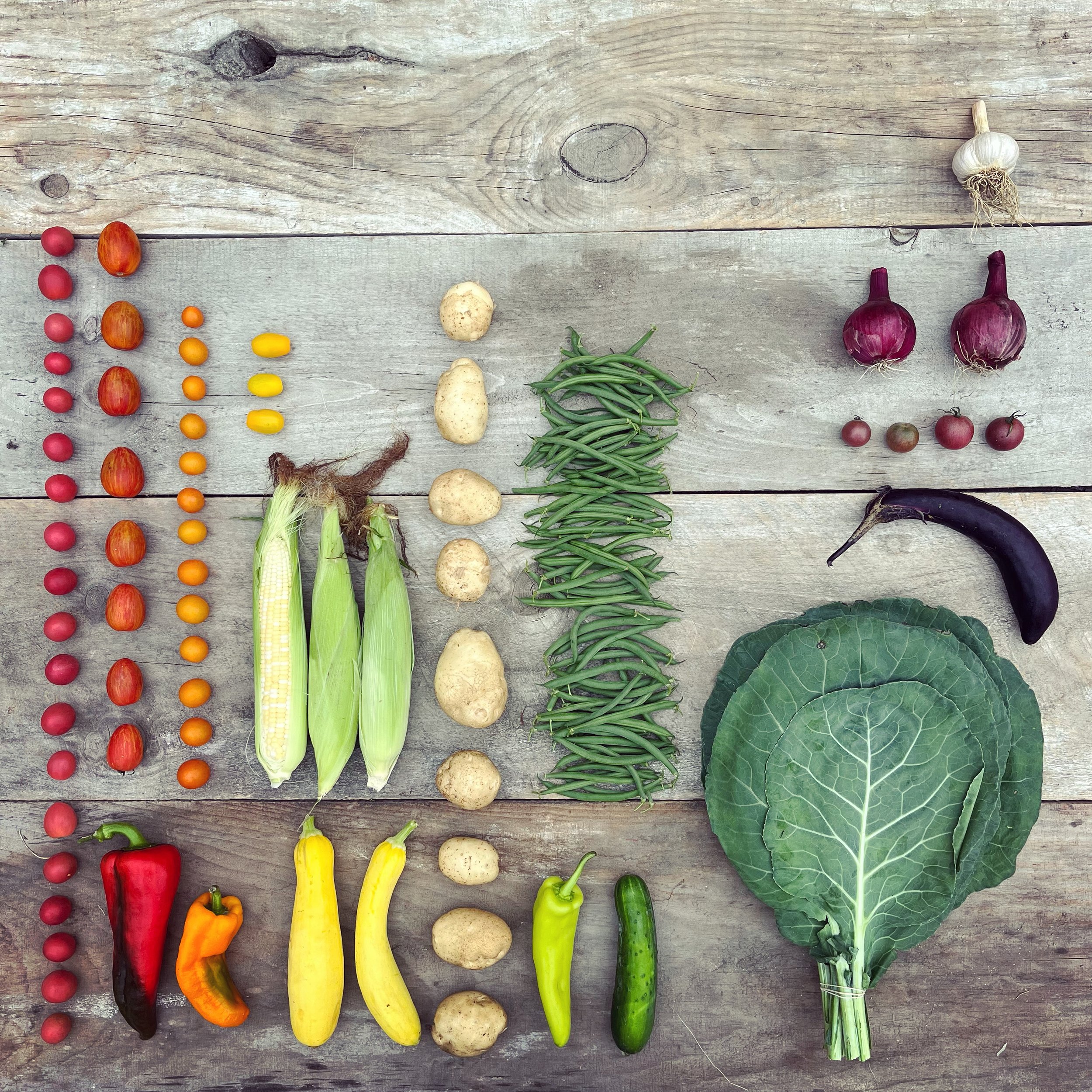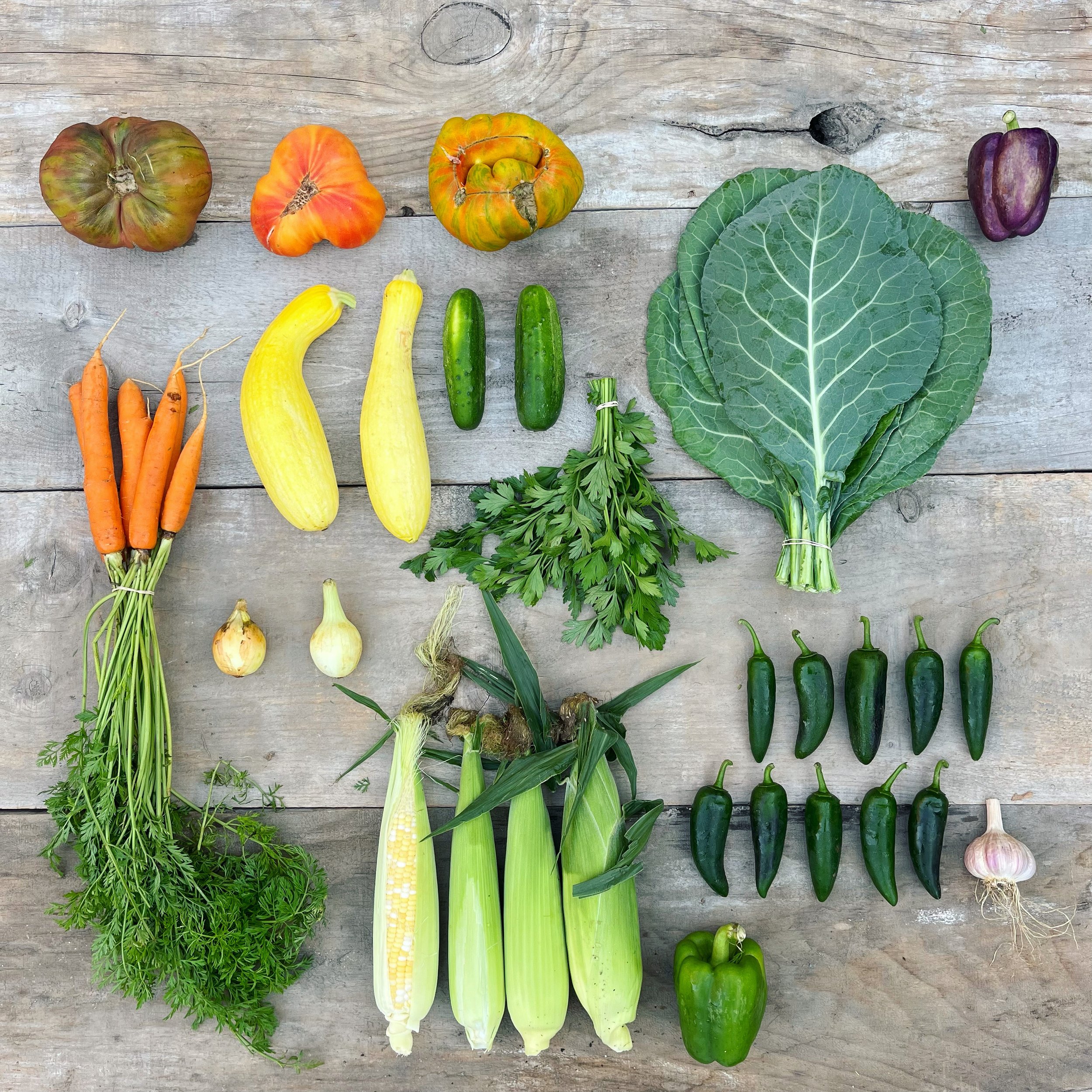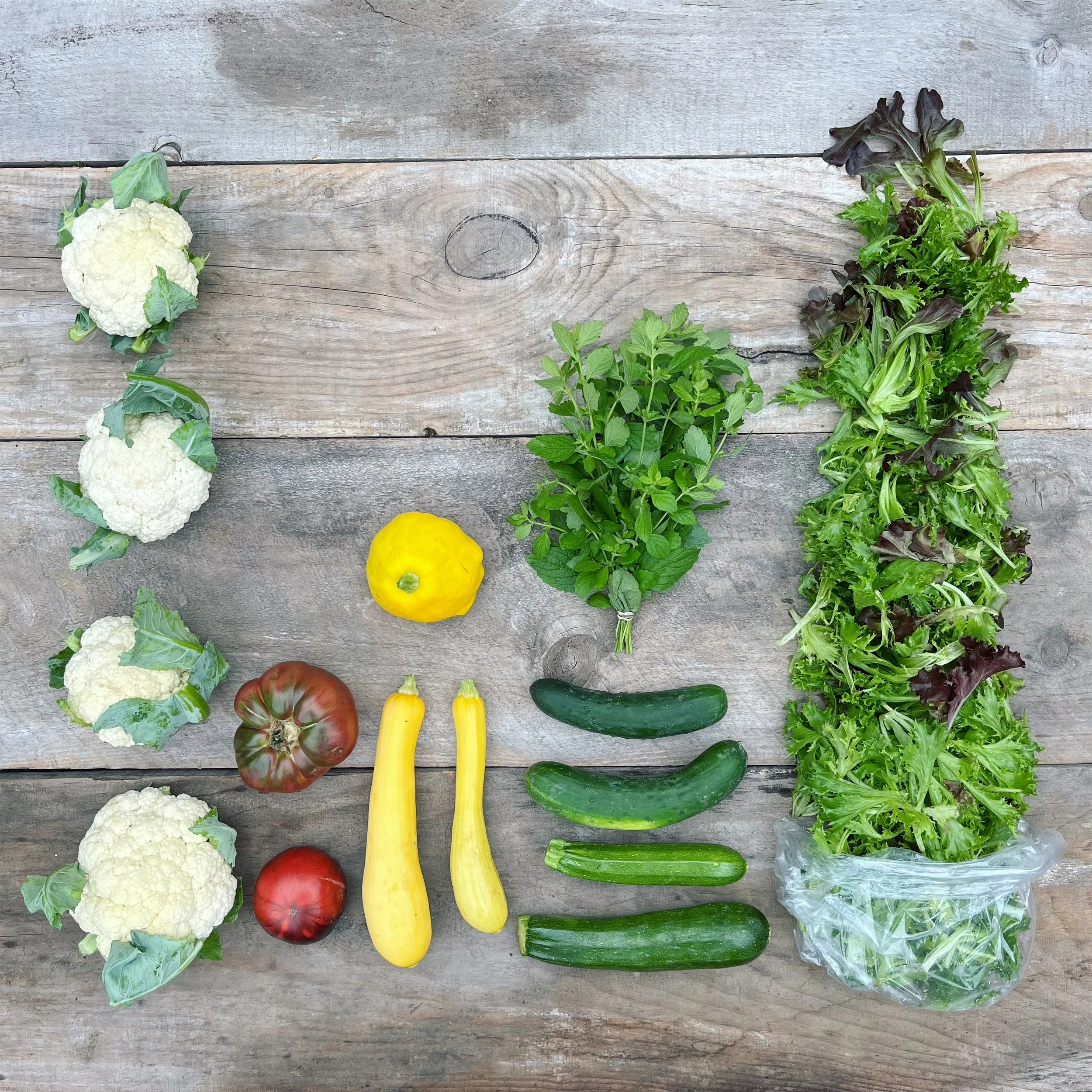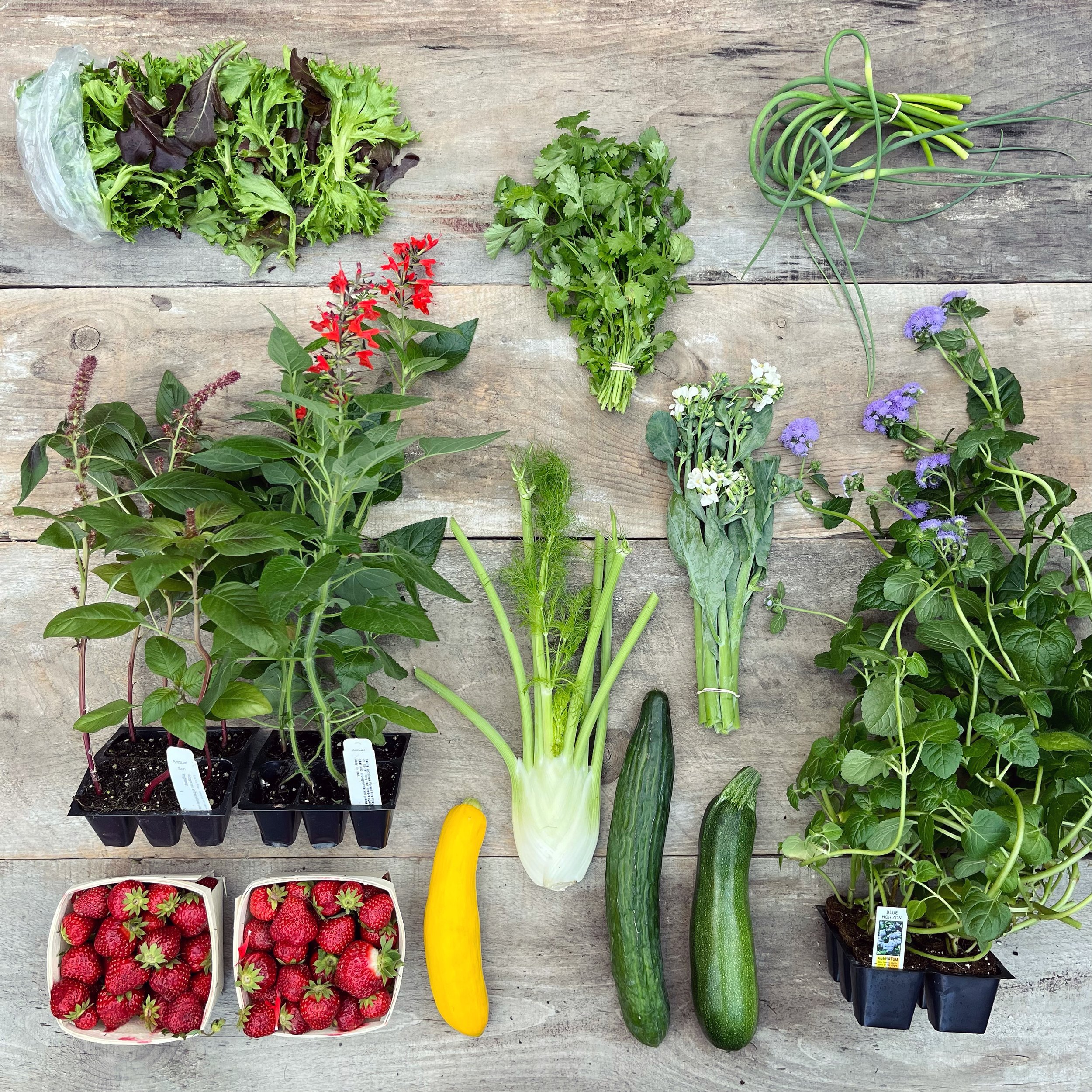P i c k l i s t
strawberries - garlic scapes - basil - lettuce - broccolini - hakurai turnips - cucumbers - plants!
I did not intend to go right into week 2 with a weather charged sob story, but here we are. The heat followed by the rain did not demolish crops, but it certainly did not help. Watching the storm roll through and hit the fields was tough on the heart. First and foremost, let’s talk about strawberries and rain. The two quarts you are receiving today are a part of an effort to clean off the current fruit and make way for the next flush. It is likely that your 2 quarts of berries may not be the sparkly shiny gems we all lust for, but they will absolutely serve a delicious purpose if eaten today or tomorrow, or, use them to make a jammy sauce to complement every biscuit in sight, ahem strawberry shortcakes (see pro tips). Because of the past week’s precipitation, this round of berries will not hold. But the later varieties should (weather dependent, lol).
Another unfortunate arrival this week are all the pests. I am not entirely certain why they all decided to show up at the sametime, but I've been squashing countless horn worms in the tomato greenhouses and the wire worms are really starting to show their face and make trails in our radishes and our (legendary 2024) hakurai turnip patch. And don’t even get me started on the deer. Daily cute love notes I like to send to Ray have been replaced by deer eating lettuce photos, deer eating strawberries photos, and deer eating cucumber photos. Not an easy time to farm, but a hell of a great time to be a pest. Some would say, it's buck wild.
MEANWHILE, in the Pick Your Own Strawberry patch, the berries are still showing up, and people are still so pumped to pick. It’s awesome to hear from Anne and Jen about all the CSAers that have made their way down River Road this week to get in on the action. I do hope to see yall out there as it is certainly the season for stained red fingers/ a belly full of berries/ late night strawberry jamming/ etc.
PYO HOURS: 8am-noon WEATHER & CROP PERMITTING!
FIXED PRICES: CASH AND CHECK ONLY
1 quart: $7/ medium picking box: $25/ large picking tray: $44
FARMY FOODIE PRO-TIPS:
Yall, get ready, and let me introduce you to new neighbor Mitchell!
Somehow by the grace of something, Edgewater has been blessed by a neighbor that not only knows how to cook, but also has stacks and stacks of tested recipes. We connected a few months ago when he popped into the greenhouses. At that time, much of what you are currently eating from the farm existed in seed packs, waiting to be sewed. Since then these seeds have sprouted into food and Mitchell is here to tell us how to eat it best. Thank heavens for resident chef Mitchell Davis, as a result we all get to try new things and prep this bounty in new ways! I AM JAZZED. If you too are jazzed, I highly recommend subscribing for free to his weekly newsletter Kitchen Sense,
Pickled Garlic Scapes recipe by mitchell!
Similar in flavor to kosher dill pickles because of their strong garlic flavor, these lacto-fermented garlic scape pickles require little effort beyond patience. They will last in the refrigerator for over a year. (I just shared some two-year old ones with Jenny and they were still delicious.) Eat
them as is or slice them to add to salads (egg, tuna, chicken, potato), or relish, or anywhere you might think to add pickles or capers.
I’m not giving amounts for this recipe because this is more of a technique (one you can use with just about any vegetable). Adjust the amounts accordingly, adding more brine in the same proportion as you need to submerge your scapes. Use kosher salt or pickling salt, not table salt,
the iodine in which will cause the pickles to discolor
Kosher salt
Hot water
Garlic Scapes
Other aromatics, such as bay leaf, dill seeds or flowering dill, yellow mustard seeds (optional)As for most lacto-fermented foods, your goal is to create a brine that is a 2.5 to 3% saline solution. That means for every 1000 milliliters of water, 25 to 30 grams of salt, or about 2 teaspoons of kosher salt per cup. Place 2 tablespoons and 2 teaspoons kosher salt in a mixing
bowl and add 1 quart (4 cups) hot water. Stir to dissolve the salt. Let sit to come back to room temperature, stirring occasionally to make sure no salt crystals remain at the bottom of the bowl.
Meanwhile, prepare the garlic scapes. Rinse the scapes and cut into 2-inch lengths just up until the bud, which you should discard. Tightly pack the cut scapes into clean canning jars, using the shoulder of the jar to wedge the scapes in. I like to use pint jars. If using aromatics, add a bay
leaf, ½ teaspoon of dill or mustard seeds, and/or some flowering dill to each jar. Once the brine is cool, fill each jar until the scapes are completely submerged. Cover the jars loosely and let sit at room temperature, out of the sun, for 5 to 7 days to ferment until your desired level of tartness. The timing will depend on the temperature of your room. Open the jars once a day to
release any gas that builds up. As the fermentation takes place, the liquid will turn cloudy, and the scapes will darken and sink. Taste them to check if they are done. When satisfied with their flavor, seal the jars and refrigerate until needed. You can strain the brine and repack the scapes
if you like a cleaner look, but it isn’t necessary.
—Cookbook author and food writer Mitchell Davis recently moved from New York City to the
Upper Valley, just down the road from Edgewater Farm. For more recipes, subscribe for free to
his weekly newsletter Kitchen Sense at www.kitchensense.substack.com
Here it is, everyone's summertime favorite: fresh, sweet strawberries atop a flaky, buttery biscuit — topped with whipped cream, of course!
PREP 25 min/ BAKE 10 to 12 mins/ TOTAL 1 hr 35 mins YIELD 9 biscuits
Berries
2 quarts (1336g) strawberries, trimmed of their leaves
1/2 cup (99g) granulated sugar
2 teaspoons lemon juice, fresh preferred
Biscuits
3 1/2 cups (420g) King Arthur Unbleached All-Purpose Flour
1 teaspoon table salt
1 tablespoon (11g) baking powder
1/2 teaspoon baking soda
1/4 cup (36g) buttermilk powder
3 tablespoons (35g) granulated sugar
8 tablespoons (113g) unsalted butter or 1/2 cup (92g) vegetable shortening, cold
2 teaspoons King Arthur Pure Vanilla Extract
1 large egg
1 cup (227g) milk*
2 teaspoons milk, optional; for topping
2 teaspoons granulated sugar, optional; for topping
*Or substitute 1 cup buttermilk (227g) for the buttermilk powder and milk
Topping
1 cup (227g) whipping cream
Instructions
To prepare the fruit: Mash 2 cups of the strawberries. Slice the remaining strawberries, and mix all of the berries with the sugar and lemon juice. Let rest 1 hour.
Preheat the oven to 425°F. Lightly grease a baking sheet, or line it with parchment.
To make the biscuits: Whisk together the dry ingredients, and work in the cold butter or shortening until the mixture is crumbly.
Whisk the vanilla and egg with the milk, then add all at once to the dry ingredients and stir until the liquid is absorbed.
Turn the dough out onto a lightly floured surface and knead four or five times, just until it holds together. Pat the dough out until it's about 1/2" to 3/4" thick, and cut it into 2 1/2" to 3" circles.
Place the biscuits on the prepared baking sheet, brush the tops with milk for a shiny surface, and sprinkle with sugar.
Bake for 10 to 12 minutes, until the tops are golden brown. Remove them from the oven and cool for 15 minutes before serving.
To assemble the shortcakes: Whip the cream until soft peaks form.
Just before serving, split open the biscuits, spoon half the berries and whipped cream on the bottom half, top with remaining biscuit halves, and spoon on the remaining berries and cream.
Tips from our Bakers
For highest-rising biscuits, use a sharp biscuit cutter, rather than a drinking glass. A sharp cutter cuts the edges cleanly, rather than mashing them together; a sharp cut allows the biscuits to rise higher.



